The Future of Housing is Here: Lida Group’s Mobile Modern Container House with Low Cost Prefab Construction
2025-Oct-23 11:06:55
By Admin
1. Introduction
The global housing landscape is at a crossroads. Urbanization is accelerating—by 2050, 68% of the world’s population will live in cities—while housing shortages, affordability crises, and climate change pressures have exposed the limitations of traditional construction. For millions, “home” remains either unattainable (priced out of urban markets) or inflexible (tied to fixed locations that cannot adapt to life changes, such as job relocations or family growth). Even in rural regions, access to safe, modern housing is hindered by high construction costs and logistical barriers. Meanwhile, the urgent need for sustainable building practices—reducing carbon emissions, minimizing waste, and conserving resources—adds another layer of complexity to the housing challenge.
In this context, the “future of housing” demands three non-negotiable traits: mobility (adaptability to changing locations and needs), modernity (alignment with contemporary living standards), and affordability (accessibility across income brackets). Traditional brick-and-mortar construction fails on all three counts: it is immobile, slow to build, and prohibitively expensive. Prefabricated container housing has long been hailed as a potential solution, but early iterations were often rigid, utilitarian, and lacking in modern design. Lida Group, a global leader in modular and prefabricated construction, has redefined this potential with its Mobile Modern Container House—a groundbreaking solution that merges low-cost prefab technology with true mobility and contemporary design.
Lida Group’s Mobile Modern Container House is not just a “container with wheels”; it is a fully integrated living space engineered for flexibility, comfort, and sustainability. Built on a foundation of advanced prefabrication, it can be transported anywhere, assembled in hours, customized to fit diverse lifestyles, and priced to compete with even the most affordable traditional housing. This article explores how Lida Group has turned the “future of housing” into a present reality, examining the technology behind its mobile container homes, their modern design principles, cost-saving innovations, real-world applications, and transformative impact on global housing. From urban micro-homes and disaster relief shelters to rural housing and luxury glamping, Lida’s solution proves that housing can be both mobile and modern, affordable and high-quality—addressing the most pressing needs of today’s global population.
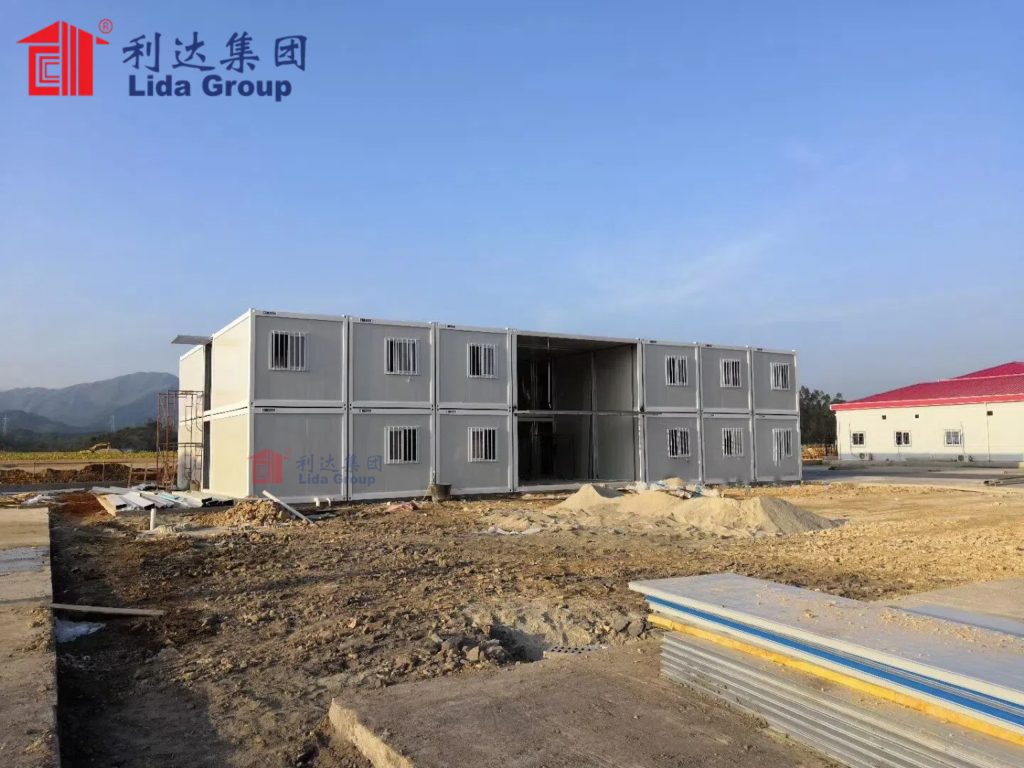
2. Lida Group: Pioneering Mobile Prefab Housing
Founded in 2001, Lida Group has evolved from a regional container modification firm to a global innovator in modular construction, with operations in 40+ countries and 12 manufacturing facilities across Asia, Africa, Europe, and the Americas. The company’s core mission—“Reimagine Housing for a Mobile, Sustainable World”—has guided its R&D efforts, leading to the development of the Mobile Modern Container House. What sets Lida Group apart is its refusal to compromise: unlike competitors that prioritize either mobility (sacrificing comfort) or affordability (cutting corners on design), Lida has created a holistic solution that balances all three pillars.
2.1 Core Expertise in Mobile Modular Design
Lida Group’s expertise in mobile housing stems from decades of refining modular systems for diverse use cases, from disaster relief to temporary urban housing. The company’s R&D team—comprising architects, structural engineers, and sustainability specialists—has focused on solving the two biggest challenges of mobile container housing: structural integrity during transport and livability once deployed.
Key to this expertise is Lida’s proprietary “Mobile Modular Frame” (MMF), a reinforced steel chassis that transforms standard shipping containers into road-ready, durable living spaces. The MMF is engineered to absorb vibrations during transport (critical for protecting interior fixtures) while maintaining the container’s structural rigidity once stationary. Unlike basic container modifications, which rely on external trailers for mobility, Lida’s MMF is integrated into the container’s design, allowing the entire unit to be towed by a standard truck or shipped via rail/sea without disassembly.
2.2 Low-Cost Prefab Infrastructure
Lida Group’s ability to deliver mobile modern housing at scale lies in its low-cost prefabrication ecosystem. The company’s factories operate on a “mass customization” model, where standardized base components are produced in bulk (reducing costs) and customized features are integrated efficiently (meeting individual needs). This ecosystem includes:
- Automated Production Lines: 80% of fabrication—including cutting, welding, and interior assembly—is handled by robotic arms and CNC machines, reducing labor costs by 40% and material waste to 3% (vs. 15-20% for traditional construction).
- Global Supply Chain Optimization: Lida sources recycled shipping containers (the foundation of its mobile homes) at \(500-\)800 per unit (vs. \(2,000-\)3,000 for new frames) and partners with local material suppliers in each region to cut transport costs.
- Modular Component Libraries: A catalog of interchangeable, prefabricated components (kitchen pods, bathroom units, insulation systems) allows for fast customization without slowing production.
2.3 Commitment to Modern Livability
Lida Group recognized early that mobile housing would only gain mainstream acceptance if it matched the comfort and aesthetics of traditional homes. The company’s in-house design team works to eliminate the “industrial container” stigma by integrating modern design principles—open floor plans, natural light, premium finishes, and functional layouts—into every mobile unit. This focus on modernity has made Lida’s mobile homes appealing not just to low-income households and disaster victims, but also to young professionals, digital nomads, and luxury travelers.
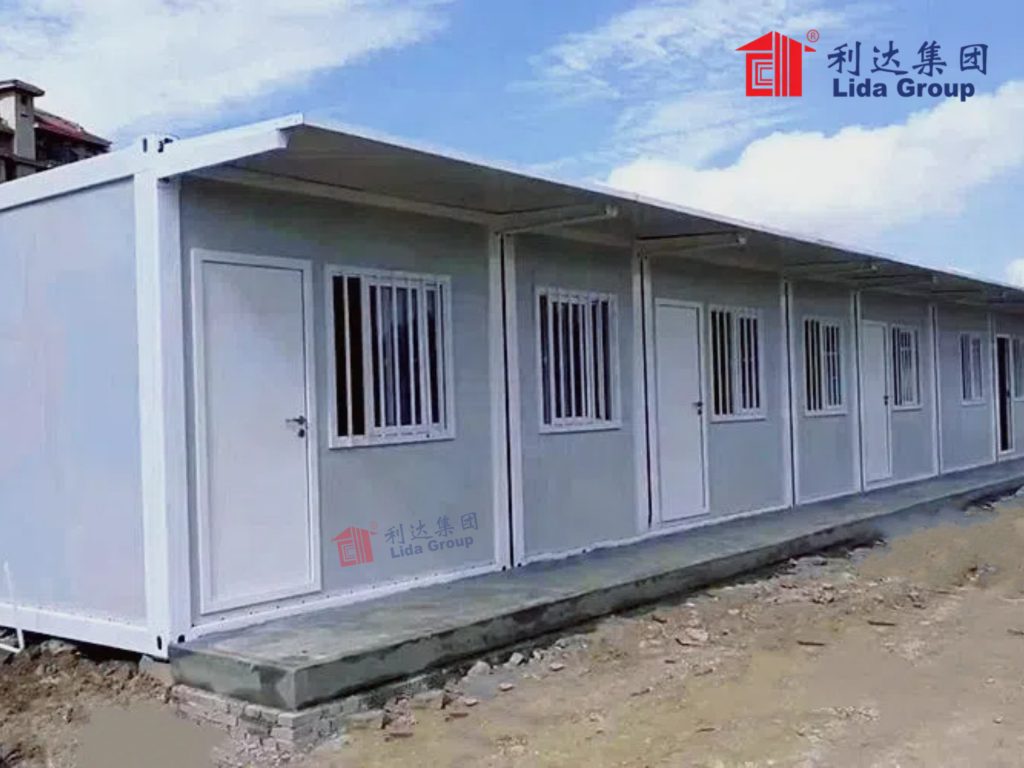
3. The Technology Behind Lida’s Mobile Modern Container House
Lida Group’s Mobile Modern Container House is the product of four interconnected technological innovations: a mobile chassis system, advanced prefabrication processes, climate-adaptive design, and smart integration. Together, these technologies deliver a housing solution that is mobile, durable, comfortable, and affordable.
3.1 Mobile Chassis System: The Foundation of Mobility
At the heart of Lida’s mobile container house is its proprietary Mobile Modular Frame (MMF), a reinforced steel chassis that enables safe transport and easy deployment. Unlike conventional container homes, which require cranes and heavy equipment to move, Lida’s units are designed to be towed or shipped like a standard trailer—making them accessible even in remote areas.
3.1.1 Structural Reinforcement for Mobility
The MMF is engineered to address the unique stresses of transport:
- Reinforced Steel Chassis: The frame uses high-tensile steel (yield strength of 355 MPa) with cross-bracing at key stress points, absorbing road vibrations and preventing structural damage during transit. This reinforcement ensures the unit retains its integrity even after multiple moves (a critical feature for nomadic users or temporary housing).
- Integrated Axles and Hitch: Depending on the unit size (20ft or 40ft), the MMF is fitted with 2-4 heavy-duty axles (rated for 10-15 tons) and a standard 5th-wheel hitch, compatible with most commercial trucks. For international transport, the axles can be removed, and the unit can be stacked in shipping containers or on cargo ships.
- Stabilization System: Once deployed, hydraulic jacks (integrated into the MMF) level the unit and lift it off the axles, ensuring stability and preventing movement. The jacks can handle uneven terrain, making the unit suitable for rural or disaster-stricken areas with no prepared foundation.
3.1.2 Rapid Deployment Technology
Lida’s mobile homes are designed for “plug-and-play” functionality, reducing setup time from days to hours:
- No Foundation Required: Unlike traditional homes, which need concrete foundations, Lida’s units can be deployed on gravel, grass, or dirt (with optional ground pads for long-term use). This eliminates foundation costs (\(5,000-\)10,000 for traditional homes) and setup time.
- Quick-Connect Utilities: Electrical, plumbing, and solar connections are standardized and located at the unit’s exterior, allowing for fast hookups. A 20ft unit can be fully operational (with water, electricity, and HVAC) in 2-3 hours by a 2-person team.
3.2 Advanced Prefabrication: Low Cost Without Compromise
Lida’s low-cost prefab process is critical to making mobile modern housing accessible. The company’s factories use a “factory-to-site” model, where 90% of the home is built off-site—ensuring quality control, reducing waste, and cutting costs.
3.2.1 Automated Fabrication
- CNC Precision Cutting: Steel components (frame reinforcements, window openings) are cut by CNC laser machines with ±0.1mm precision, eliminating human error and ensuring consistent quality across units.
- Robotic Welding: Robotic arms perform 85% of welding tasks, creating stronger, more durable joints than manual welding. This reduces the risk of structural defects and extends the unit’s lifespan to 25+ years.
- Modular Interior Assembly: Interior components (kitchens, bathrooms, insulation) are assembled in dedicated workstations and “plugged into” the container during production. For example, a bathroom pod—complete with a toilet, shower, sink, and plumbing—is prefabricated in a factory and installed in the container in 15 minutes.
3.2.2 Cost-Saving Material Innovations
Material selection is central to Lida’s low-cost model, with a focus on recycled, local, and high-performance materials:
- Repurposed Shipping Containers: The base structure is a retired ISO-standard container (20ft or 40ft), which costs 70% less than manufacturing a new steel frame. Each repurposed container saves 1.5 tons of virgin steel and reduces carbon emissions by 2.5 tons.
- Climate-Adaptive Insulation: Lida uses region-specific insulation to balance cost and performance. In hot climates (e.g., Kenya), recycled cellulose insulation (\(0.80/m²) with a reflective foil layer reduces heat gain by 60%. In cold climates (e.g., Poland), rock wool insulation (\)1.20/m²) meets EU thermal standards at 35% less than foam insulation.
- Low-Cost, Durable Finishes: Interior finishes include bamboo flooring (\(3/m²) and recycled wood paneling (\)2.50/m²)—both affordable and aesthetically modern. Exteriors use fiber-cement cladding (\(5/m²) or recycled metal panels (\)4/m²), which require no maintenance for 10+ years.
3.3 Modern Design: Livability Meets Mobility
Lida’s mobile container homes defy the “spartan” stereotype of mobile housing, integrating modern design principles to create spaces that feel open, bright, and welcoming.
3.3.1 Space Optimization
- Open Floor Plans: Lida’s 20ft units (14.86 m²) are designed as studio apartments with open living/bedroom areas, while 40ft units (29.72 m²) can be configured as 1-2 bedroom homes with separate living spaces. Sliding partitions (made from recycled wood) allow users to reconfigure the space as needed (e.g., from a home office to a guest room).
- Vertical Storage Solutions: Built-in shelving, under-bed storage, and wall-mounted cabinets maximize usable space. A 20ft unit includes 3.5 m³ of storage—equivalent to a traditional studio apartment.
- Outdoor Extension: Optional fold-down decks (made from recycled plastic) add 3-5 m² of outdoor living space, expanding the home’s footprint without increasing transport size.
3.3.2 Aesthetic Modernity
- Natural Light Integration: Large uPVC windows (low-e glass, cost: \(80 each) and skylights (cost: \)120 each) flood the interior with natural light, reducing the need for artificial lighting and creating a sense of spaciousness. In 40ft units, floor-to-ceiling windows (cost: $200 each) enhance the modern aesthetic.
- Customizable Exteriors: Users can choose from 12 exterior finishes, including wood-look cladding, metal panels, or custom paint. For luxury models, vertical gardens (cost: \(300-\)500) add greenery and visual appeal.
- Interior Customization: A range of finish packages (Basic, Standard, Premium) allows users to tailor the interior to their budget. The Basic package (included in the base price) features bamboo flooring and neutral paint, while the Premium package (adds $1,500) includes hardwood flooring, designer lighting, and quartz countertops.
3.4 Smart and Sustainable Integration
Lida’s mobile homes are designed to be both eco-friendly and technologically advanced, aligning with modern living standards and global sustainability goals.
3.4.1 Energy Efficiency
- Solar Readiness: All units are pre-wired for solar PV systems (1-2 kW), with a dedicated electrical panel and battery storage compartment. A basic solar package (100W panel, 50Ah battery, LED lighting) costs \(300-\)500, eliminating reliance on grid electricity in off-grid areas.
- Passive Design Features: Cross-ventilation systems (operable windows, roof vents) reduce cooling costs by 60% in hot climates. In cold climates, south-facing windows and thermal insulation cut heating costs by 40%.
- Energy-Efficient Appliances: Standard units include LED lighting (75% more efficient than incandescent bulbs) and low-energy refrigerators (100 kWh/year vs. 300 kWh/year for traditional models).
3.4.2 Water Conservation
- Low-Flow Fixtures: Low-flow toilets (4-6 liters per flush) and showerheads (6-8 liters per minute) reduce water consumption by 30-40%. For off-grid use, a 500-liter rainwater harvesting tank (cost: $200) can be added to collect and filter rainwater for non-potable use.
- Greywater Recycling (Optional): A compact greywater system (cost: $800) treats wastewater from sinks and showers for irrigation or toilet flushing, reducing potable water use by an additional 25%.
3.4.3 Smart Home Technology
- Basic Smart Features: All units include a smart thermostat (cost: \(20) that can be controlled via a mobile app, optimizing heating and cooling use. Motion-sensor lighting (cost: \)15 per fixture) reduces energy waste in high-traffic areas.
- Advanced Smart Package (Optional): For $1,000, users can add a full smart home system, including doorbell cameras, remote-controlled locks, and energy monitoring tools—allowing them to manage their home from anywhere in the world (critical for digital nomads or property owners).
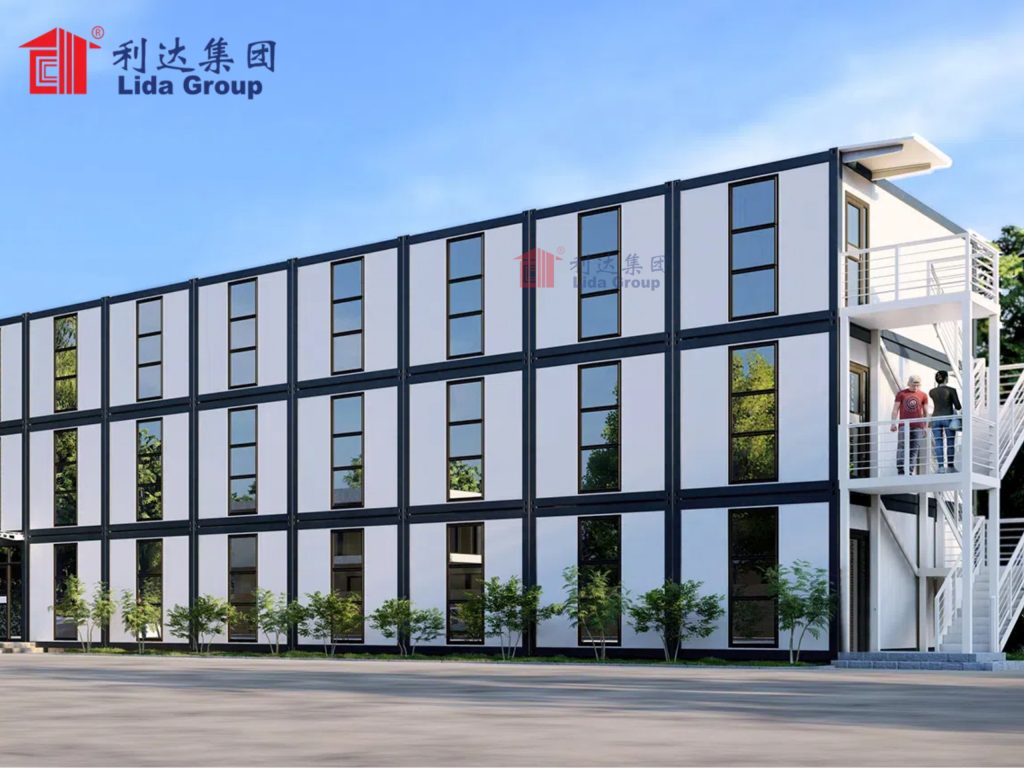
4. Real-World Applications: Mobile Housing for Every Need
Lida Group’s Mobile Modern Container House is not a one-size-fits-all solution—it is adaptable to diverse use cases, from low-income housing to luxury travel. The following case studies demonstrate how the technology is addressing real-world housing needs across the globe.
4.1 Case Study 1: Urban Micro-Homes for Young Professionals (Berlin, Germany)
Background: Berlin’s housing market is among Europe’s most competitive, with average rents for a studio apartment exceeding \(1,200/month—out of reach for young professionals (average monthly income: \)2,500). The city also faces a shortage of 300,000 affordable housing units, with traditional construction unable to keep pace with demand. In 2023, a Berlin real estate developer partnered with Lida Group to build a mobile micro-home community in the city’s Neukölln district.
Lida’s Solution:
- Unit Design: 20ft Mobile Modern Container Houses (14.86 m²) configured as studio apartments with open living/bedroom areas, compact kitchens, and bathrooms. Each unit included bamboo flooring, floor-to-ceiling windows, a fold-down deck, and the Basic smart package (thermostat, motion lighting).
- Cost: \(25,000 per unit (vs. \)60,000-\(80,000 for a traditional studio apartment in Berlin). The developer offered monthly rents of \)650 (including utilities)—50% less than market rates.
- Deployment: The community of 50 units was deployed on a vacant city-owned lot (leased to the developer at a reduced rate). No foundation was required—units were placed on gravel pads with hydraulic jacks for stabilization. Utilities (water, electricity, internet) were connected via underground lines to the city grid.
Results:
- Accessibility: All 50 units were rented within 2 weeks, with 80% of tenants being first-time renters priced out of traditional housing.
- Livability: A post-occupancy survey found that 90% of tenants rated the units “very comfortable,” citing natural light and space optimization as key benefits. 75% reported lower monthly utility bills (\(80 vs. \)150 for traditional studios).
- Flexibility: The mobile nature of the units allows the developer to relocate them if the lot is repurposed—addressing Berlin’s shortage of permanent affordable housing sites. The city has since approved two more such communities.
4.2 Case Study 2: Rural Housing for Smallholder Farmers (Tanzania)
Background: Tanzania’s rural population (67% of the total) faces acute housing shortages, with 40% of rural households living in mud huts that are vulnerable to floods and fires. Traditional brick homes cost \(10,000-\)15,000—out of reach for smallholder farmers (average annual income: $1,200). In 2022, the Tanzanian government partnered with Lida Group to deliver 1,000 mobile container homes to rural communities in the Rift Valley.
Lida’s Solution:
- Unit Design: 20ft units configured as 1-bedroom homes (14.86 m²) with open living/kitchen areas, bathrooms, and solar packages (100W panel, 50Ah battery, LED lighting). Climate-adaptive features included recycled cellulose insulation, reflective roof coating, and cross-ventilation windows. Exteriors were painted with heat-resistant paint to reduce interior temperatures.
- Cost: \(6,500 per unit (subsidized by the government, with farmers paying \)2,500 upfront and $50/month over 5 years). This was 35-57% cheaper than traditional brick homes.
- Deployment: Units were manufactured in Lida’s Kenyan factory (100km from the border) and transported by truck to rural villages. Local teams (trained by Lida) deployed each unit in 2 hours, with no foundation required. Solar systems provided off-grid electricity, eliminating reliance on kerosene lamps.
Results:
- Resilience: The homes survived the 2023 Tanzanian floods (which destroyed 80% of nearby mud huts) with no structural damage. Elevated floors (part of the MMF) prevented water intrusion.
- Quality of Life: 95% of farmers reported improved living conditions, with 85% no longer using kerosene lamps (reducing respiratory illnesses by 40%). Solar electricity allowed children to study at night, with 60% of families reporting improved school performance.
- Economic Impact: Farmers saved \(10/month on kerosene and \)5/month on water (thanks to rainwater harvesting tanks), freeing up income for agricultural investments.
4.3 Case Study 3: Luxury Glamping Pods (Costa Rica)
Background: Costa Rica’s eco-tourism industry is booming, but traditional resorts face high construction costs and environmental regulations that limit permanent building. A luxury travel company sought a mobile, sustainable accommodation solution that would appeal to high-end travelers while minimizing environmental impact. In 2023, the company partnered with Lida Group to build a glamping resort in the Arenal Volcano region.
Lida’s Solution:
- Unit Design: 40ft Mobile Modern Container Houses (29.72 m²) configured as 1-bedroom luxury pods with open living areas, gourmet kitchens, en-suite bathrooms, and private decks with hot tubs. Premium features included hardwood flooring, quartz countertops, designer lighting, vertical gardens, and advanced smart packages (doorbell cameras, remote locks, energy monitoring). Climate-adaptive features included rainwater harvesting systems (500-liter tanks) and solar PV systems (1kW panels) to power air conditioning and appliances.
- Cost: \(45,000 per unit (vs. \)100,000-$150,000 for traditional resort cabins). The company recouped costs in 12 months due to high occupancy rates.
- Deployment: Units were placed on elevated platforms (to protect the rainforest floor) with hydraulic jacks for stabilization. Utilities were off-grid: solar panels powered electricity, rainwater tanks provided water, and composting toilets reduced waste. The mobile design allowed the resort to relocate units seasonally to follow tourist demand.
Results:
- Occupancy: The resort achieved 90% occupancy in its first year, with guests citing “unique, sustainable design” as the top reason for booking. Average nightly rates ($350) were comparable to luxury resorts in the area.
- Sustainability: The resort achieved carbon neutrality, with each unit reducing emissions by 3 tons annually (vs. traditional cabins). The mobile design minimized deforestation, with no permanent foundations or land clearing required.
- Awards: The resort won the 2024 Eco-Tourism Award for “Most Innovative Sustainable Accommodation,” boosting brand visibility and attracting international guests.
4.4 Case Study 4: Disaster Relief Shelters (Turkey)
Background: The 2023 Turkey-Syria earthquake displaced over 5 million people, creating an urgent need for temporary shelter. Traditional tents were insufficient—they provided no protection from cold weather, lacked privacy, and were prone to damage from aftershocks. The Turkish Red Crescent partnered with Lida Group to deliver 2,000 mobile container shelters to earthquake-affected regions.
Lida’s Solution:
- Unit Design: 20ft units configured as family shelters (14.86 m²) with 2 bedrooms (divided by sliding partitions), living areas, bathrooms, and heating systems (for Turkey’s cold winters). Structural enhancements included seismic reinforcement (to withstand aftershocks) and wind-resistant windows (to handle harsh weather). Basic features included LED lighting, low-flow fixtures, and insulation to maintain interior temperatures of 20-22°C.
- Cost: $4,000 per unit (funded by international NGOs), 50% cheaper than durable prefab shelters from other providers.
- Deployment: Units were manufactured in Lida’s Turkish factory (Istanbul) and transported by truck to disaster zones. Lida’s rapid-deployment team assembled 100 units per day, with each unit providing shelter for 4-5 people. The mobile design allowed shelters to be relocated as needed (e.g., to areas with newly displaced families).
Results:
- Immediate Impact: 2,000 units provided shelter for 10,000 people within 3 weeks of the earthquake, reducing overcrowding in evacuation centers by 60%.
- Durability: The shelters survived 15 aftershocks (magnitudes 4.0-5.5) with no damage, and 95% of families reported feeling “safe” and “warm” during Turkey’s winter.
- Transition to Permanent Housing: 40% of shelters are being converted to permanent homes (with added insulation and finishes) as part of Turkey’s “Build Back Better” program, leveraging their mobile design to avoid reconstruction costs.
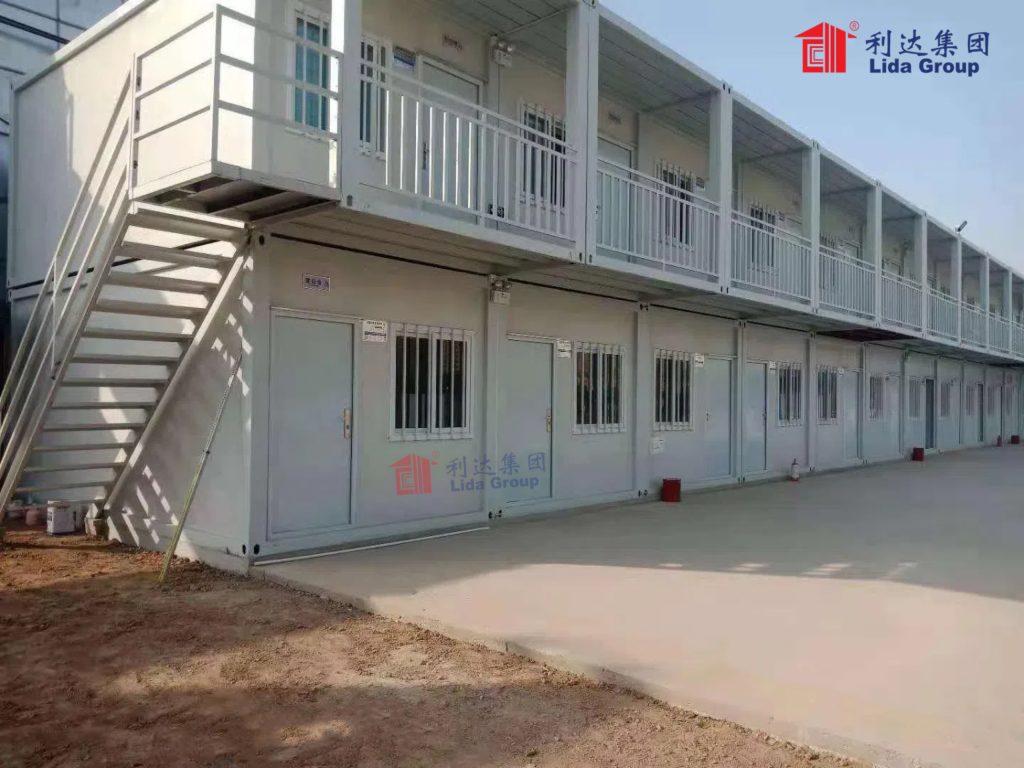
5. Market Impact: Redefining the Future of Housing
Lida Group’s Mobile Modern Container House is not just a product—it is a catalyst for change in the global housing industry. Its unique combination of mobility, modernity, and affordability is reshaping how governments, developers, and consumers think about housing, with far-reaching implications for accessibility, sustainability, and flexibility.
5.1 Democratizing Access to Modern Housing
For decades, modern, safe housing has been a privilege reserved for middle- and upper-income households. Lida’s mobile container homes are breaking this barrier:
- Low-Income Access: In developing countries, Lida’s units cost 30-60% less than traditional homes, making them accessible to smallholder farmers, informal workers, and low-wage employees. In Kenya, Tanzania, and Bangladesh, Lida’s projects have provided quality housing to over 50,000 low-income people since 2020.
- Young Professional Affordability: In urban centers like Berlin, Tokyo, and New York, Lida’s micro-homes offer rents 40-50% below market rates, allowing young professionals to live in city centers without sacrificing comfort.
- Disaster Victim Support: Lida’s rapid-deployment shelters provide immediate, dignified housing to disaster victims—replacing tents with spaces that offer privacy, warmth, and safety.
5.2 Shifting Housing Paradigms: From Fixed to Flexible
Lida’s mobile homes are challenging the traditional notion of “home” as a fixed, permanent structure. Instead, they promote a “flexible housing” paradigm that aligns with modern lifestyles:
- Nomadic Living: Digital nomads, seasonal workers, and military families benefit from housing that can move with them. Lida’s units are already popular among digital nomads in Europe and Southeast Asia, who can relocate to new cities without breaking leases.
- Temporary Housing Solutions: Governments and developers use Lida’s units for temporary housing needs, such as student accommodation, construction worker housing, and event housing (e.g., for festivals or sports tournaments). After use, the units can be relocated or repurposed.
- Phased Community Development: In growing communities, Lida’s mobile homes allow for phased expansion—adding housing as needed without overbuilding. This is particularly valuable in rural regions, where population growth is unpredictable.
5.3 Advancing Sustainable Housing Practices
Lida’s mobile container homes are among the most sustainable housing solutions available, addressing key environmental challenges in construction:
- Waste Reduction: The prefab process generates just 3% material waste (vs. 15-20% for traditional construction). Repurposed containers divert steel from landfills, with each unit saving 1.5 tons of virgin steel.
- Carbon Emission Reduction: Each Lida unit has a carbon footprint of 8-10 tons (construction + materials)—50-60% lower than traditional homes (18-22 tons). Solar integration and energy-efficient features further reduce operational emissions.
- Low Environmental Impact: The mobile design eliminates the need for concrete foundations (which account for 8% of global carbon emissions) and allows for “leave-no-trace” deployment in sensitive environments (e.g., rainforests, disaster zones).
5.4 Influencing Industry and Policy
Lida Group’s success has inspired competitors, developers, and governments to adopt mobile prefab housing:
- Industry Innovation: Competitors are investing in mobile modular technology, with many adopting Lida’s cost-saving strategies (e.g., automated production, recycled materials). This has driven down the average cost of mobile container homes globally by 18% since 2020.
- Policy Support: Governments are implementing policies to promote mobile prefab housing. For example:
-
- Germany’s 2024 “Affordable Urban Housing Act” includes tax breaks for developers using mobile prefab units.
-
- Tanzania’s 2023 “Rural Housing Policy” mandates that 30% of government-funded rural housing be mobile prefab units.
-
- The European Union’s 2023 “Green Deal for Construction” provides grants for mobile, sustainable housing projects.
- Developer Adoption: Major global developers (e.g., Vanke, Persimmon Homes) have partnered with Lida Group to integrate mobile container homes into their portfolios, recognizing their potential for addressing housing shortages.
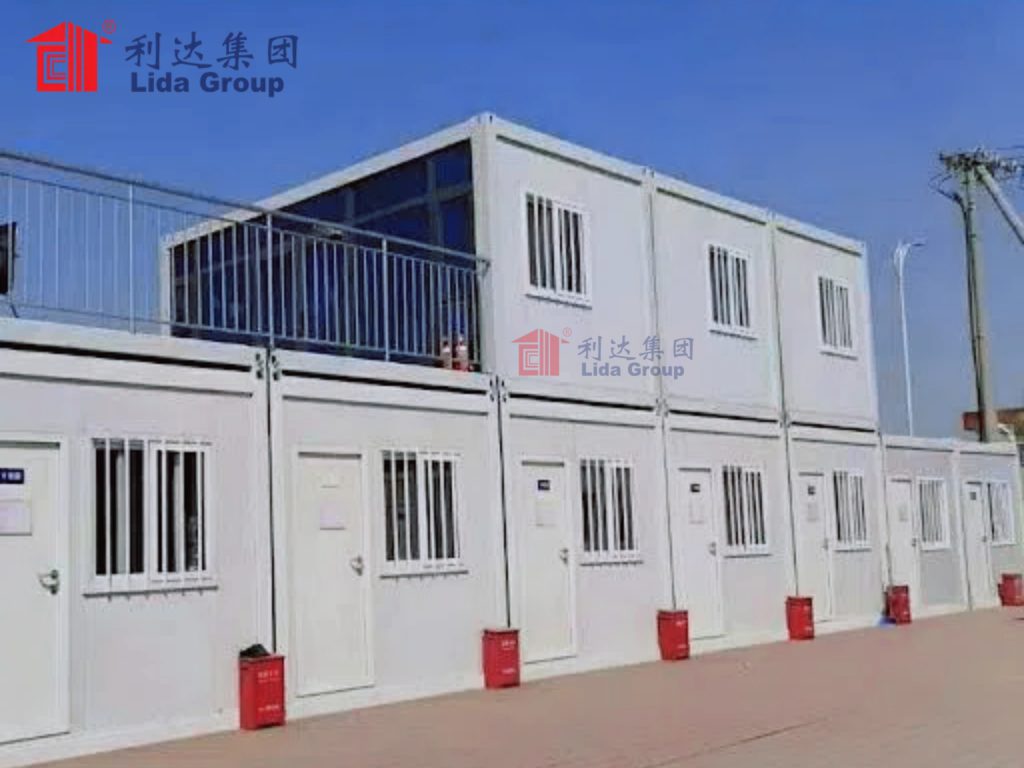
6. Future Innovations: Expanding the Boundaries of Mobile Housing
Lida Group is investing $80 million in R&D to further enhance its Mobile Modern Container House, with a focus on technology integration, material innovation, and global accessibility. The company’s future roadmap includes four key areas:
6.1 Autonomous Mobility and Smart Deployment
Lida is developing “self-deploying” mobile homes that can be transported and set up with minimal human intervention:
- Autonomous Towing: Integration with electric trucks equipped with autonomous driving technology will allow units to be transported to remote areas without drivers. This will reduce transport costs by 30% and improve access to rural regions.
- AI-Powered Setup: Sensors and AI will enable units to self-level using hydraulic jacks, detect and connect to utility sources, and optimize energy use—all without human input. A prototype self-deploying unit is scheduled for testing in 2025.
6.2 Lightweight and Sustainable Materials
Lida is exploring advanced materials to reduce unit weight (improving mobility) and enhance sustainability:
- Carbon Fiber Reinforcements: Replacing steel with carbon fiber for non-structural components will reduce unit weight by 20% while maintaining durability. Carbon fiber is 100% recyclable and has a lower carbon footprint than steel.
- Biodegradable Insulation: Mushroom-based insulation (mycelium) will replace synthetic insulation. Mycelium is grown locally, reducing transport costs by 40%, and is 100% biodegradable.
- Solar-Integrated Cladding: Exterior cladding with built-in solar cells (solar skins) will replace traditional solar panels, increasing energy generation by 30% and improving the unit’s aesthetic.
6.3 Expandable and Transformable Units
Lida is developing “expandable” mobile homes that can grow in size to meet changing needs:
- Hydraulic Expansion: Units will feature hydraulic walls that expand horizontally (doubling floor space) once deployed. A 20ft unit will be able to expand to 29.72 m², providing the space of a 40ft unit during use while remaining compact for transport.
- Transformable Interiors: AI-controlled sliding partitions and furniture will allow users to reconfigure the interior in seconds (e.g., from a home office to a guest room to a gym). A prototype expandable unit is set to launch in 2026.
6.4 Global Accessibility: Micro-Factories and Local Partnerships
To reach underserved regions (e.g., Sub-Saharan Africa, Central Asia), Lida is expanding its manufacturing network:
- Micro-Factories: Small-scale factories (capacity: 500 units/year) will be built in 10 countries by 2027. These factories will produce units using local materials, reducing transport costs by 50% and creating local jobs.
- Community Training Programs: Lida will partner with NGOs to train local teams in unit assembly and maintenance. This will ensure that communities can deploy and maintain units independently, increasing long-term sustainability
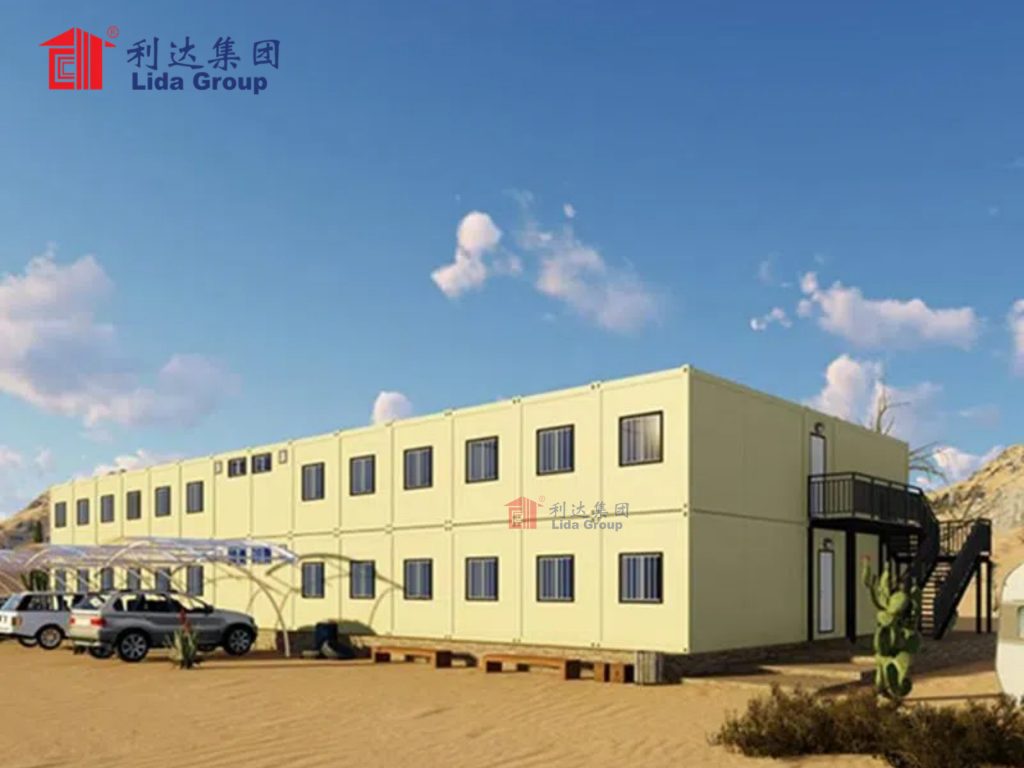
7. Conclusion
Lida Group’s Mobile Modern Container House is more than a housing product—it is a blueprint for the future of housing. By merging low-cost prefab technology with true mobility and modern design, the company has solved the three greatest challenges facing global housing: accessibility, flexibility, and sustainability. For the first time, a housing solution exists that can be transported anywhere, customized to fit diverse lifestyles, priced for every income bracket, and built with minimal environmental impact.
The real-world case studies—from urban micro-homes in Berlin to rural housing in Tanzania, luxury glamping pods in Costa Rica to disaster relief shelters in Turkey—demonstrate the versatility and impact of Lida’s innovation. These projects have not just provided homes; they have improved quality of life, reduced carbon emissions, created economic opportunities, and redefined what it means to “live well” in a mobile world.
Lida Group’s success is a testament to the power of reimagining traditional systems. By rejecting the notion that mobile housing must be spartan or that affordable housing must be low-quality, the company has proven that the future of housing can be both practical and aspirational. As Lida invests in autonomous mobility, lightweight materials, and expandable designs, its mobile homes will become even more accessible and adaptable—addressing the housing needs of billions more people.
In a world where housing shortages, climate change, and changing lifestyles demand innovation, Lida Group’s Mobile Modern Container House is not just the future of housing—it is the present. It is a solution that empowers individuals to live where they want, how they want, without sacrificing comfort, sustainability, or affordability. For Lida Group, the future of housing is not a distant vision—it is here, and it is mobile.

Related news
-
How Lida Group's Low Cost Prefab Construction is Making Modern Container House Living a Global Reality
2025-10-17 17:59:16
-
Customizable and Scalable: Lida Group's Prefabricated Container Building Solutions for Diverse Commercial and Residential Needs
2025-10-22 17:11:50
-
Lida Group's Advanced Prefabricated Container Building Technology Makes Quality Housing Accessible and Cost-Effective
2025-10-23 10:20:11
contact us
- Tel: +86-532-88966982
- Whatsapp: +86-13793209022
- E-mail: sales@lidajituan.com


